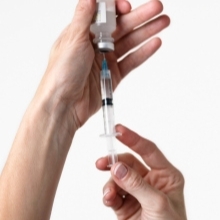Reduction in HPV in young women in England seen following introduction of national immunisation programme
14 April 2014

Infection with high-risk human papillomavirus (HR HPV) types 16 and 18 is responsible for around 70-80% of cervical cancers. A study conducted by Public Health England and presented today at the Society for General Microbiology's Annual Conference shows a reduction in these two HR HPV types – which are included in the HPV vaccines used – in sexually active young women in England.
Between 2010 and 2012, over 4,000 samples were collected from young women receiving a chlamydia screen as part of the National Chlamydia Screening Programme in England. Prior to the HPV immunisation programme introduction, a survey showed around 1 in 5 sexually active women aged 16 to 18 were infected with at least one of the two HPV types included in vaccines. A similar survey conducted following the introduction of the programme showed the prevalence had dropped to 1 in 15 young women.
Post-immunisation prevalence of HPV types 16 and 18 infection was lowest among women aged 16 to 18 years old, the age group with the highest vaccination coverage. Prior to the immunisation programme, this age group was shown to have the highest prevalence of infection.
Each year around 2,000-2,500 women are diagnosed with cervical cancer in England, the most common cancer in women under 35. David Mesher, Public Health England, presenting the work at the conference, said: "This study provides an early indication that the national HPV immunisation programme is successfully reducing vaccine-type HPV infections in sexually active young women in England, and also suggests herd-immunity may be benefiting non-vaccinated young women and men.
"The data provide reassurance that the high efficacy against HPV infection in women reported in clinical trials can be effectively realised in practice, and in a programme achieving high coverage amongst young females. These data adds to our confidence that the HPV immunisation programme will achieve its aim of reducing cervical cancer."
Image: Fuse/Thinkstock.
